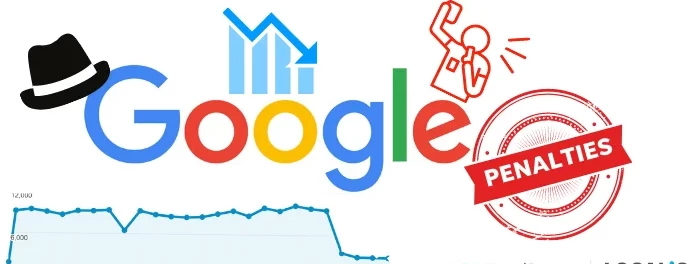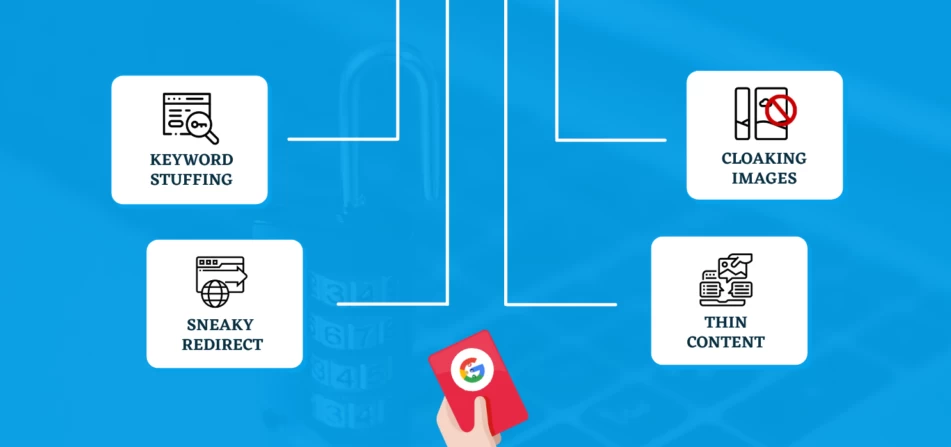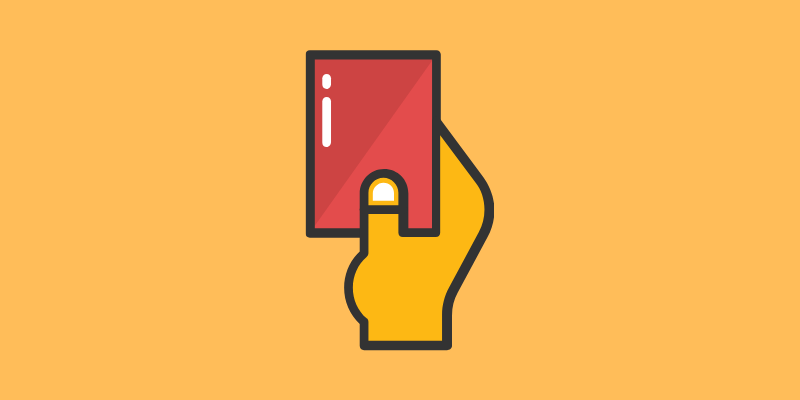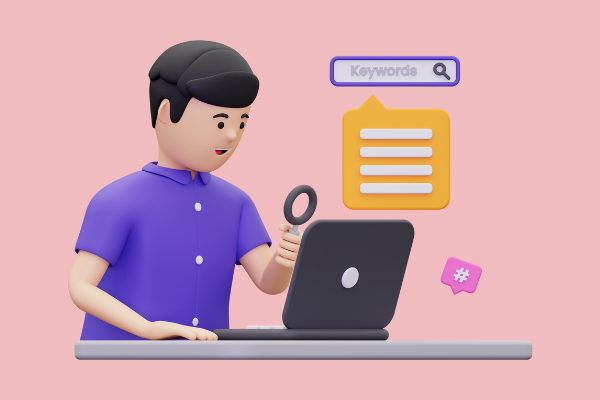Last Updated on 1 year ago by Ecem Ertürk
Google applies some penalties to deliver a high-quality experience for its consumers and to guarantee that websites do not compromise on content quality. As a result of these penalties, your Google rankings may suffer and you may lose prominence in search results. There are two types of Google penalties: manual and algorithmic. Punishments enforced by Google workers through complaints/reports are known as manual penalties. After every Google algorithm update, if there is a large loss in organic traffic and a decline in keywords, as well as a loss of visitors and traffic, it should be regarded as a Google penalty. Therefore, it is necessary to work with an SEO agency to avoid such penalties. In this way, your site’s traffic will not decrease.
Web Spam Overview
Google, the most popular search engine, has a strict algorithm and penalizes websites that do not follow the guidelines. Google emphasizes SEO research and puts user-friendly websites one step ahead of the competition to provide the best quality and most valuable information to internet users at all times. Google will penalize websites that do not follow these guidelines.
In layman’s terms, a Google penalty is a manual censure levied by Google’s webspam team against a website. This often occurs when a website fails to meet Google’s quality requirements. This Google penalty causes a significant decline in ranks as well as a loss of organic traffic. It’s important to note that the negative consequences of Google’s algorithm adjustments are not the same as punishment.
In its quality criteria, Google does not use the phrase ‘penalty.’ Manual actions and algorithmic actions are the terms used to describe them. If your organic ranks and traffic suddenly decline despite no downtime or technical SEO concerns on your site, you might be dealing with one of two issues:
- A Google employee can assess your website and take manual action if necessary.
- A Google algorithmic action decreases your website’s rating as a result of a Google update.
The Google penalty is intended to encourage Google to improve its service. In Turkey, about 90% of internet users favor Google. Websites that do not provide original and high-quality content are punished to provide a better service to users. The purpose of the Google penalty is to act as a deterrent.
What is a Google Manual Action Penalty?
Website owners must monitor their properties using the Google Search Console to ensure they are not subject to manual penalties. In the case of property ownership, the Google penalty is communicated to the website owner in addition to the penalty imposed on the website. A guide containing vital facts on why the penalty was imposed and what should be done to avoid it may be found. This is only true for manual punishments. In algorithm penalties, there is no Google penalty notification.
The cleaning step should be begun according to the cause of the Google penalty to eliminate the manual penalties. It is vital to inspect the links and determine if the structured data has any problems. Malicious code should be verified on the website. Following the cleaning procedure, a request for a re-evaluation of the website must be sent to Google. If Google rejects the assessment request, the cleaning process should be redone and a re-evaluation sought from Google. This procedure must be followed again and again until the penalty is lifted.
If you’re losing rankings quickly, check to see if your property has a manual action in Google Search Console. In the event of a prospective penalty, you will be notified through the Search Console. If you have a Search Console account, the notification you receive there explains why you were penalized. It contains information that will assist you in escaping, as well as instructions on how to get rid of it.
What Happens When a Penalty is Received from Google?
When Google performs a manual Google penalty on your website, it will:
- Your site’s ranking might plummet
- Your rich results could disappear from the SERP
- Your site’s indexes could be removed
- Your organic conversion rates could drop
- Your organic traffic could reduce
- Inbound traffic may be delay if you’re using services like Google News.
You should keep track of the date of the manual Google penalty as well as the dates when the penalty is lifted. Your traffic may drop suddenly after taking manual action.
What is the Duration of a Manual Action Penalty?

If you have experienced a rapid regression in the Google system for an unknown reason, received a manual warning, made radical changes to your site, and your site is not in the ranking, you have received a Google Manuel Action Penalty. There is no set time for manual processes. In some circumstances, the problem may go away in a few days, while in others, penalties of up to 1-2 years may be imposed. This time will be reduced by re-evaluation requests and problem patches. You may check the Search Console to see whether your site has been punished in prior years.
In this case, you must first act calmly to deal with the problem. First and foremost, you should review the Webmaster Console Guide to learn more about your Google penalty. Then you will have to correct the mistakes you made while dealing with punishment. You should file a reconsideration request with the Google penalty app after rectifying the necessary mistakes. Your site will be able to restore its former power after your assessment request is approved. Working with a mindful SEO to avoid Google penalties, generating quality and unique content, and taking over site administration following Google’s expectations and needs are just a few of the most crucial factors that will help you succeed.
Manual Action Types (Google Penalties)

In most cases, Google penalizes websites in one of two ways. The spam team may detect a problem with your website and take direct action, or you may see an automatic decline in ranks as a result of a Google algorithm update. The first thing you should do is check Google Webmaster Tools to see whether you have any Google alerts. If you’ve been hit with a manual Google penalty, you’ll get a warning that says ‘notice of unnatural links identified’ or something similar, which means Google found low-quality inbound links linking to your site. Links that have been purchased to pass PageRank or appear to be part of a link scheme are examples of unnatural or low-quality links. Whatever they find, your responsibility is to remedy the problem and resubmit your website to Google’s search results for reconsideration. If you don’t see any notifications in Google Webmaster Tools, the issue will require a deeper look at Google’s recent modifications and how they affected your site.
1. Keyword stuffing
The practice of cramming a webpage with keywords or numbers to impact the site’s position in Google search results is known as ‘keyword stuffing.’ These terms are frequently seen in a list or group, or out of context (not natural prose). When you stuff pages with keywords and numbers, readers will have a bad time, and your site’s rating will suffer. Make sure to write content that is both valuable and informative, and that includes keywords in the right places. Keyword stuffing may be seen in the following examples:
- Lists of phone numbers that don’t provide much value
- Text blocks list the locations and states for which a website is attempting to rank.
- Overuse of the same words or phrases in an unnatural manner.
Stuffing your web pages with keywords won’t assist your search rankings, as a general rule. In reality, keyword-stuffed content is illegible to readers, which might affect your SERP rankings. As a result, search engines prioritize pages that provide a positive user experience. But it’s not as simple as that, and there’s a lot more to consider.
‘Filling pages with keywords or numbers leads to a bad user experience, and can hurt your site’s rankings,’ Google says. As you can see from the source, if you’re just repeating the same term or number on a website, there’s a significant possibility Google and other search engines may punish the page in question by lowering its results. Furthermore, in addition to being able to read textual information, search engines pay close attention to how users interact with a web page and, as a result, its content.
Consider the case when a newly published, keyword-stuffed page is momentarily placed among the top search results due to the employment of obvious black hat manipulation strategies. At the end of the day, as soon as they see the chaos inside, they will depart. This will, in turn, result in a high bounce rate, signaling to search engines that this page isn’t providing them with what they expected.
2. Comment Spam
Some users’ comments may be malicious. In 2015, Google started offering descriptions for this type of spam. Such people may use harmful links in usernames or comments to spam your content, which is against Google standards.
If you have spammy comments on every page of your website, Google may see them and conclude that you are promoting spammy content. It’s a better option to read each comment if you’ve permitted to go back to the relevant pages and not check all comments first. It is important to pay attention not only to blogs but also to websites with guestbooks. If you receive a manual action notification after allowing spammy comments on your site without moderation:
- Your pages may be ranked lower.
- Pages with spammy comments may be deleted from the index.
- You send your regular customers to websites that are either irrelevant or harmful.
On CMSs like WordPress, you may review comments and eliminate spammy ones before publishing them to your website. If you’re getting a lot of spam comments on your site, you might want to disable comments for a while.
3. User-Generated Spam
Google may take action on the site if you use practices that violate its principles, notably our Quality Guidelines. However, not every infraction of our Webmaster Guidelines is due to the site owner’s deliberate creation of content. Malicious individuals on a reputable site can occasionally cause spam. This form of spammy content is frequently published on websites that allow users to build new pages or add content in various ways.
If you receive a Google penalty for this form of spam, rest assured that we believe your site is of adequate quality and that Google does not need to take manual site-wide action. However, if your site has a lot of user-generated spam, it may influence our evaluation of it, and we may need to take manual action across the entire site as a result. Here are some instances of spammy content created by users:
- Free hosting services with spammy accounts
- Posts on forum threads that are spammy
- Spam comments on blogs
Because spammy user-generated content might taint Google search results, Google recommends that you monitor and delete any such spam from your site.
To Avoid Spam from User Generated Content (UGC):
- Consider shutting off your site’s forums if they’re too old or obsolete, or if they’re not providing much value to your visitors.
- You can add relevant phrases like “watch movie” to the blocklist if you’re complaining about a specific form of spam.
- Boost the quality of your moderating crew.
- Limit the number of links that can be included in messages.
- At times, keep an eye on the messages of the most active people.
- You may also apply the nofollow property to user-shared URLs.
4. Big Mistake: Automatically Generated Content
Programmatically created content is known as auto-generated content. Google may take action on the information that is designed to manipulate search rankings rather than aid users. The following are some examples of such content, however, they are not exhaustive:
- Text that isn’t very interesting to the reader yet contains search keywords.
- Before publishing, the text is translated by automatic technology without human inspection or revision.
- Automated procedures, such as Markov chains, were used to produce the text.
- Automatic thesaurus generation or obfuscation methods were used to construct the text.
- Importing Atom/RSS feeds or search results generate text.
- Adding or mixing content from several websites without providing sufficient value.
The goal of having a well-optimized website is to assist users. Humans have no desire to read pointless text. They’re looking for answers, advice, and solutions to their internet problem. Auto-generated content is a flimsy attempt to rank higher. It is a compelling justification for being blacklisted by search engines.
5. Sneaky Redirects
A redirect occurs when a visitor is directed to a different URL than the one they requested. There are a variety of good reasons to redirect one URL to another. You could have changed the address of your website or amalgamated numerous pages into one.
Some redirections, however, fool search engines because the content they display to real users differs from what crawlers see. The Google Webmaster Guidelines prohibit redirecting a user to a separate page to display content that differs from that given to the search engine crawler. The search engine can index the original page instead of the redirect when redirects are done this way, and users are directed to the redirect destination. This approach, like cloaking, is misleading in that it tries to offer different content to users and Googlebot, and it sends consumers to places they didn’t expect to go to. The following are some examples of private routing:
- When a specific sort of content is displayed on search engines, consumers are abruptly switched to something else.
- Users on desktops are forwarded to a legitimate page, while mobile users are diverted to a spam-filled domain.
It is possible to reroute people using JavaScript. You may use JavaScript to redirect users to an internal page when they log in, for example. Keep this aim in mind when analyzing JavaScript or other redirect mechanisms to ensure your site conforms to our requirements. When moving your site, keep in mind that 301 redirects are excellent practice, but if you don’t have access to your website’s server, you may use a JavaScript redirect instead.
6. Affiliate Programs
Affiliation is a natural result of the nature of the internet. On the other hand, website proprietors in the affiliate marketing company should be extra cautious. Instead of duplicating information from the original merchant’s website, you may create unique, high-value content to increase sales.
Google may deem pages created by affiliate websites to be worthless if they do not bring value to users. A terrible user experience is caused by the presence of inferior content with little value in SERP. For example:
- Pages featuring product affiliate links where the product descriptions and reviews are duplicated verbatim, with no added value
- Websites with a small quantity of unique content that serve as affiliates.
7. Scraped Content
Scraped content is content that has been copied from another website or source. And don’t imagine that if the content is obtained from a high-quality source rather than a low-quality, spammy site, you won’t be fined. Stuff that has been scraped is content that has been scraped. Google doesn’t care where it comes from; if it’s duplicated, it’s of no service to users.
When you’re faced with a Thin Content manual action, the best thing you can do is remove or enhance the impacted pages. If the page is required, try expanding it with additional useful information.
8. Doorway Pages
Doorway pages are low-quality, low-ranking pages that are optimized exclusively for a few keywords. These pages normally serve as a portal between your users and the content on your website. As a result, they’re commonly referred to as ‘doorway pages’. Sites or pages developed specifically to score highly for certain search queries are known as doorways. These gateway sites are extremely inconvenient for users since they might lead to several similar pages in user search results, all of which go to the same destination.
These gateway sites are typically used to develop links and increase search engine traffic to pages that solely include spam links. Bridge pages, portal pages, gateway pages, and entrance pages are all terms used to describe doorway pages. They are very important, low-quality sites that are designed to rank higher for certain keywords and serve as a gateway between users and content. Here are some doorway examples:
- Multiple domains or sites that are aimed at certain areas or locations and direct people to a single page
- Pages created to direct users to the most useful or relevant parts of your website
- The majority of sites are identical and closer to search results than a well-defined, browseable hierarchy
9. Cloaking / Hidden Texts and Links
Hidden text or links in your content to manipulate Google’s search results can be considered deceptive and is a violation of Google’s Webmaster Guidelines. Here are some of the several strategies for hiding text (for example, using too many keywords):
- On a white backdrop, use white text.
- Adding text to a picture
- CSS is used to move text off-screen.
- Choosing a font size of 0
- Hide a link by inserting a single tiny letter, such as a hyphen in the paragraph.
Look for features that are not visible to visitors to your site while analyzing it for hidden text or links. Although certain hidden texts are visible when seen together, not all hidden messages are visible. If your site contains difficult-for-engines JavaScript, pictures, or Flash files, the content of your site is utilized for this collection, with explicit text. Take advantage of these screen reader fact explainers if your child uses screen readers, mobile browsers, or browsers without plug-ins and is sluggish. You may test the accessibility of your site by disabling JavaScript and pictures in your browser or using a text-only browser like Lynx. When it comes to the equipment that makes your site economical, consider the following:
- Images: Use the alt property to give descriptive text for images. We also recommend including a title and descriptive text that visitors may read around the image. More tips on how to submit photographs may be found in this article.
- JavaScript: In the noscript> element, put the same information in JavaScript. If you use this way, make sure the content is the same as in JavaScript and that it is displayed to users who don’t have JavaScript enabled on their browsers.
- Videos: In HTML format, add descriptive text about the video. You may also provide a copy of the video that has been transcribed. For additional information on how to publish videos, see this page.
10. Backlink Violations
Paid backlinks and link schemes that violate the standards may result in a Google penalty for your website. Paying for advertising websites is quite natural for Google. It does, however, advise adding nofollow to backlinks and sponsoring to paid links. The following are some examples of link schemes that may be regarded as in violation:
- The act of exchanging links
- Paid links that don’t have the Nofollow attribute
- The usage of anchor text in an aggressive manner
- Obtaining backlinks to your website, which are produced automatically by systems meant to do so
- Web directories of poor quality
- Footer backlinks that aren’t natural
11. Structured Data Spam
A website uses structured markup data to help Google better comprehend the information on a page. It can also improve the look of a page in search results. The basic goal of structured markup data is to provide the user with a well-organized search experience. Regarding structured data, there are explicit instructions or Google rules, and any errors might result in a structured data Google penalty. Spam penalties are also possible, which is why it’s critical to understand the faults and prevent them. It’s usually a good idea to include structured data, but the problem is that it’s often done incorrectly. Following Google’s standards can result in structured data Google penalty, which is why you should understand how mistakes arise and how to avoid them in the future.
Because of the structured data provided on your site, you may face a manual Google penalty without even realizing it. Only your rich search results will be deleted from the search results as a consequence of this human action. For example, your product schema markup pages may no longer appear in SERPs with review stars or prices.
12. Content with Little Value / Thin Value
One such message for a manual action that Google might provide to websites or web pages is ‘thin content.’ When the search engine discovers low-quality or shallow pages on your site, this justification is offered.
Thin content, according to Google, is ‘low-quality or shallow pages on your site,’ or content that adds little or no value to the user experience. Google also advises that if pages don’t ‘offer users with significantly original or useful content,’ they may be punished, especially if they violate Google’s Webmaster Guidelines. Here are a few more instances of improper practices that may result in a Google thin content penalty for your SEO:
- Content that has been created automatically. For example, text that is incomprehensible to readers or text that has been pieced together from various sources.
- Affiliate pages that aren’t very thick. This refers to content from a single brand (or connected brands) being duplicated on several websites or domains.
- Other people’s content. Scraped content, for example, or low-quality or irrelevant guest blog entries.
- Pages that lead to other pages. Pages that don’t accurately display the main content and instead direct readers to another page to get what they’re looking for.
13. Pure Spam
Pure spam is one of Google’s most severe manual actions against a website. Sites that employ aggressive spam tactics may face a pure spam Google penalty. Constant manual operations on websites might result in a pure spam Google penalty. For example, if your site is consistently punished for low-quality content or artificial links, you’ll likely receive a spam signal in the Search Console. This includes keyword stuffing and other forms of aggressive spam. Your site will be deleted from Google’s index if you receive a pure spam Google penalty. Google removes your pages from the index within 12 to 24 hours after receiving the manual action notification. Your sites may be eliminated from the news index if you obtain traffic from services like Google News.
14. Security Issues
Manual activities are not the same as security issues. In this case, Google may show visitors a compromised site or part of its pages to safeguard and alert users and website owners. One of the key distinctions between manual actions and security problems is that the latter requires manual spam review.
15. Google Discover Manuel Actions
When Google News policies are broken, your site may face manual action. The cause of the manual action, as well as the pages impacted, will be visible in the Search Console. Violations of the Google Discover standards may result in a manual action against your site. Since February 8, 2021, these sorts of manual actions have been made public.
Furthermore, the AMP version’s content should be on the same topic as the original web page. Although the content does not need to be identical, visitors should be able to access the same information on both the AMP and the canonical page. If an AMP content mismatch violation is discovered at this time, your site may face manual action.
16. Reconsideration Requests
A reconsideration request asks Google to re-evaluate your site after you’ve fixed the concerns noted in a manual action or a security issue notification. Visit the Manual Actions report or the Security Concerns report to learn more about manual actions and security issues.
After you’ve fixed the issues, you’ll need to submit a reconsideration request to Google to have the manual steps specified in this post removed. This form will only appear if your site receives a manual action.
You should provide all of the specifics of how you resolved the concerns in your request review form, as well as documentation. After that, you must await feedback from the reviewers. Requests for reconsideration may take a few days or a week to process.
All the significant answers about the Google penalty are now yours! However, it would be beneficial to work with a Google ads agency to be able to act professionally.












